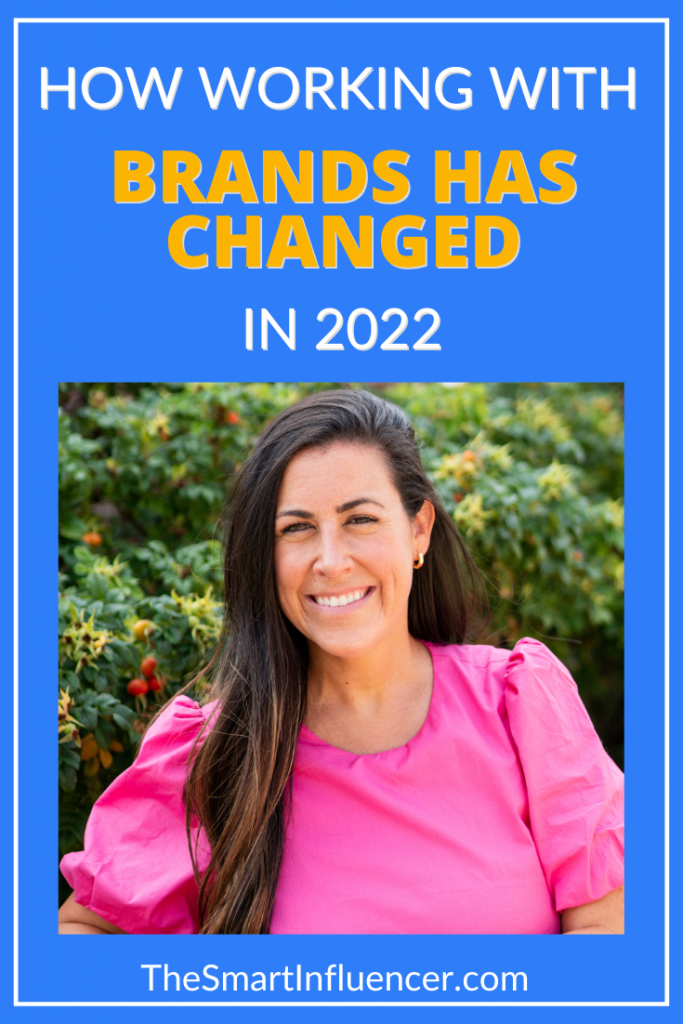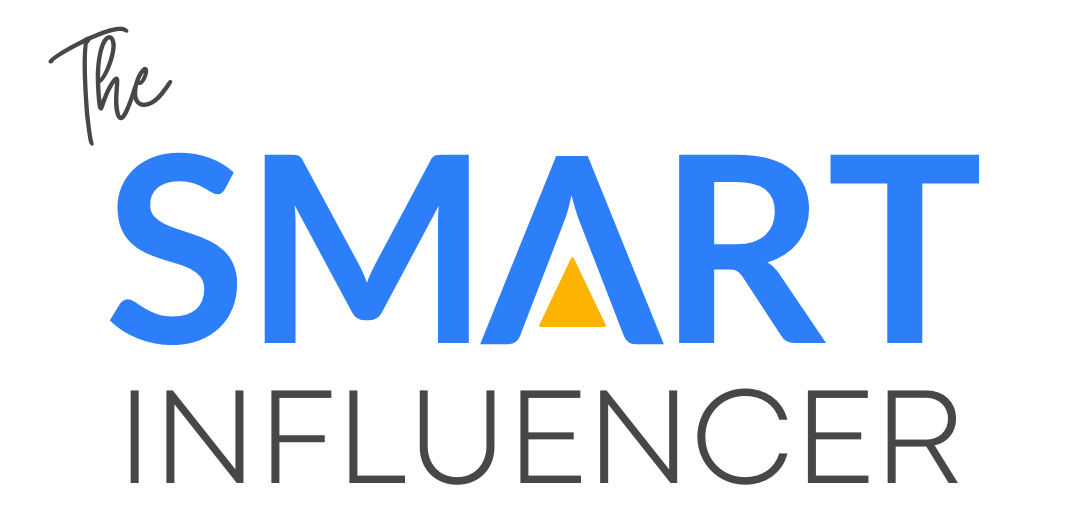How Working With Brands Has Changed In 2022
In any industry it’s important to know when it evolves; if you’re an influencer this episode will let you in on how working with brands has changed in 2022. Knowing how brands are changing the way they collaborate with influencers will help you appear professional and help you succeed when working with brands.

Katie Stoller has worked for three public relations agencies where she worked with big iconic brands. Katie Stoller now leads the influencer marketing at Fiat Growth, based in Silicon Valley. Fiat Growth focuses mostly on FinTech companies and inter-growth, which is user growth, developing apps that go to market strategy, and getting people to sign up for things.
This year is a pivotal year in how brands are hiring and how influencers are pricing themselves. Out of the pandemic world, it’s important for influencers to know how working with brands has changed. The information about how brands have changed will allow influencers to know what to expect and better market themselves when working with brands.
Episode 094: How Working With Brands Has Changed In 2022
About Katie Stoller
Katie Stoller is the Head of Influencer Marketing at Fiat Growth, a growth marketing shop focused on data backed decision making, innovation, iteration and execution. Fiat Growth works with some of the top fintechs from seed stage and beyond.
With over a decade of experience at top PR agencies, Katie counsels clients on how to effectively reach goals by working with brand-right influencers to tell compelling and engaging stories. During her career, she’s worked with brands big and small across multiple verticals. Some of the large brands she’s worked with include household names like IKEA, LG, Whirlpool, J.M. Smucker Co., General Mills, and Wendy’s.
Katie holds a B.A. from the University of Illinois and a M.A. from DePaul University’s award-winning PRAD program. She is a proud mentor and member of the Women in Influencer Marketing (WIIM) professional group. Katie is based in Chicago.
Website: Fiat Growth
Instagram: @katiestoller_
The Shift In Brand Deals
- In the beginning when blogs were becoming more complex and more like what you would read in a magazine. There was an “aha moment” where Katie and other people in PR wondered why aren’t they pitching writers that are creating amazing blogs and keeping them consistently updated? Katie started pitching bloggers.
- Brands giving PR boxes and gifts to influencers and seeing who would write about their products became taboo.
- Pricing became a big factor because brands were spending a lot of money on influencer marketing, now brands are more interested in what they will get in return.
- Now we’re seeing brands do more affiliate programs which are deals where the brand will pay an influencer, but won’t pay them in full until the influencer shows the brand their sales. Some brands will incrementally pay the influencer once the brand starts to see sales.
- The reason that working with brands has changed could be because the pandemic has changed companies’ budgets.
- There is now more data, and brands are becoming stricter about who they’re working with and how much things are costing.
- When blogging first started, brands had no idea what bloggers did and how they could create awareness for brands.
- Katie says that before the impression from a blogger’s post meant less than an article from the New York Times. There was a learning curve to accept blog posts as real currency.
“All the data points are showing that the engagement rates for blogs are higher than those of more traditional articles.” – Katie Stoller
What Brands Want
- Some people are very adamant on telling influencers to not post a brand unless they’re being compensated because it’s free advertising.
- However, Katie says that when she worked with major brands, most of them won’t even consider working with an influencer unless they have already organically posted their product. Posting organic mentions on social media can prove to be helpful.
- Brands are now more interested in SEO (search engine optimization) than they were before.
- People are using blogs as a search engine to find recipes because they like that specific food blogger’s content.
- There has been discussion on how much control to give influencers when they’re working with brands. Katie has to fall somewhere in between because brands are paying the influencer to say certain things for their campaign.
- Katie leaves the major creative approach up to the influencer. Influencers can choose what time to post their content because they know their own analytics and what resonates with their audience.
- Algorithms have completely tanked organically, the content is not showing up on followers’ feeds anymore on Instagram and Facebook, and because of this there has to be a way where brands feel comfortable that there’s stuff happening.
“Brands want to see performance because there’s no longer a big budget for brands to give stuff to so many influencers.” – Katie Stoller
The Shift In Brands’ Strategies
- Brands are now implementing different strategies. One of these strategies are affiliate programs which entails a cost per signup, a cost per click, and influencers get paid based on how much they perform.
- There’s a conversation happening because influencers aren’t necessarily happy with this strategy and their argument is that they’re not sales people.
- Katie suggests that influencers need to think of storytelling in a different way, if they’re going to partner up with brands and tell their story, there has to be more of an initiative and effort for influencers to push for the next step.
- Christina asks the brand what their goal is and understanding their goal helps the influencer craft the message.
- Sometimes a brand’s goal is just brand awareness. Katie says that in her experience working in PR, there’s hope that there will be a spike that will show brands some numbers in sales.
- For certain brands where the main KPI (key performance indicator) that we’re looking at for success is conversion, it’s just adjusting the message slightly to push for that conversion if the main goal is some sort of action.
- Katie says that shares and saves are much more of an indication that somebody is eventually going to make a purchase or convert as a consumer than a like will. If someone is sharing, they were compelled to take that information and give it to someone for a reason.
- There has been a shift from the importance of pure vanity metric engagement (comments and likes) and brands are now craving shares, saves, and click throughs.
- In general, most bloggers are using social media to push traffic to their own sites and as an additional revenue stream. In 2022, it has changed where social media is not the primary traffic anymore, so bloggers are putting more effort into things like SEO because it’s driving more traffic than social media is.
- The vast majority of what Katie does now is UGC (user generated content), which is taking influencer content that they’re paying for and using it as ads.
- Katie says that influencers should be charging extra for usage rights. It should not cost the same amount as it does for you to create content, it should be a reasonable monthly fee for a certain amount of months.
“Your rate is always what you feel you’re worth.” – Katie Stoller
What’s Next
Make sure you grab your FREE download >> Fiat Growth
You can connect with Katie Stoller on Linked In or on Instagram.
Review & Subscribe on Apple Podcasts
If you liked this episode, please consider rating and reviewing my show on Apple Podcasts or your favorite podcast app. As always, we’d love to know what you learned in today’s show – send us a DM on Instagram to let us know.
Links Mentioned in This Episode
- KPI = Key Performance Indicator
- UGC = User Generated Content
- Linked In

Add A Comment